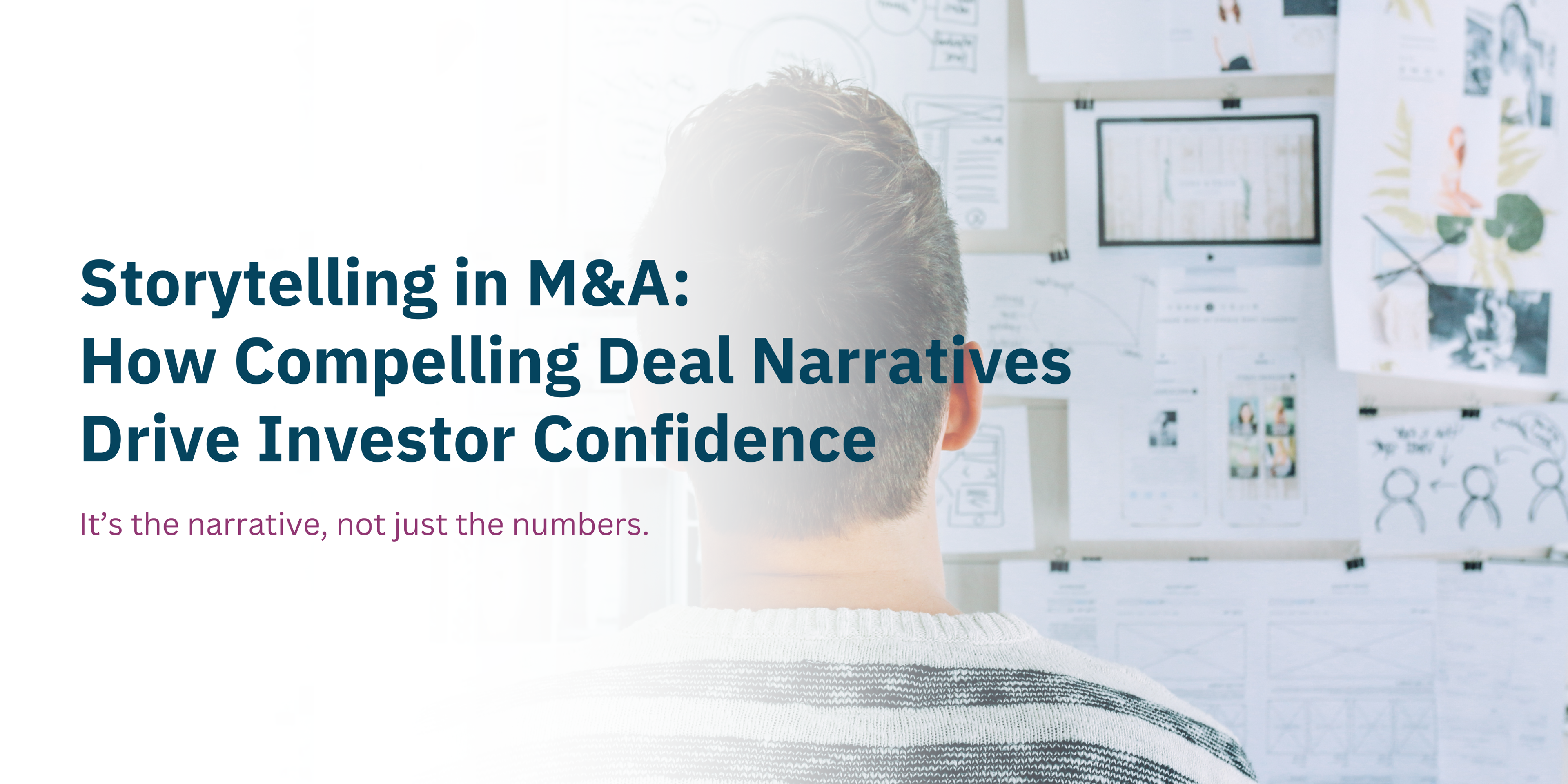In the fast-paced world of mergers and acquisitions (M&A), financials alone don't seal the deal. Investors are looking beyond balance sheets, they need a compelling story that explains the strategic value behind the transaction. A strong narrative can transform a complex acquisition into an opportunity for growth, innovation, and long-term success.
Here’s how storytelling has played a pivotal role in some of the most notable M&A deals.
1) Apple’s Acquisition of Beats by Dre
Strategic Goal: Expanding into the music streaming industry and enhancing brand appeal.
- In 2014, Apple acquired Beats Electronics for $3 billion, raising questions about its high valuation.
- Apple positioned Beats as more than just a headphone brand, it was a gateway into music streaming and a way to connect with youth culture.
- This acquisition ultimately helped Apple strengthen its presence in the entertainment and technology sectors.
Impact: By 2022, Apple dominated the U.S. headphone market with a 49.7% share, proving that the acquisition was not just about hardware but about integrating entertainment into Apple’s ecosystem.
2) Facebook’s Acquisition of WhatsApp
Strategic Goal: Strengthening global communication and expanding user reach.
- In 2014, Facebook acquired WhatsApp for $19.3 billion, despite its low revenue at the time.
- The narrative focused on WhatsApp’s potential to connect over a billion users globally, reinforcing Facebook’s mission of worldwide communication.
- Facebook emphasized the platform’s simplicity, privacy features, and future growth.
Impact: WhatsApp now has over 2.7 billion active users, proving that the acquisition was a long-term play in global messaging dominance.
3) Microsoft’s Acquisition of LinkedIn
Strategic Goal: Integrating professional networking with Microsoft’s productivity tools.
- In 2016, Microsoft acquired LinkedIn for $26.2 billion, surprising many analysts.
- Microsoft framed the deal as a way to enhance its cloud and enterprise offerings by integrating LinkedIn with Office 365.
- The acquisition positioned Microsoft as a leader in professional networking, data analytics, and workplace solutions.
Impact: LinkedIn’s membership has grown from 433 million to over 930 million users, and its business solutions revenue has increased by 33%.
4) Disney’s Acquisition of Marvel Studios
Strategic Goal: Creating a blockbuster entertainment universe with cross-platform potential.
- Disney acquired Marvel in 2009 for $4 billion, initially seen as a risky bet on comic book characters.
- The story focused on Marvel’s expansive character universe and its potential for films, theme parks, and merchandise.
- This vision led to the creation of the Marvel Cinematic Universe (MCU), which transformed the entertainment industry.
Impact: The MCU has generated over $28 billion in global box office revenue, proving that Disney was investing in an interconnected entertainment ecosystem.
5) Amazon’s Acquisition of Whole Foods
Strategic Goal: Reinventing grocery retail through technology and logistics.
- Amazon’s $13.7 billion acquisition of Whole Foods in 2017 was about more than just physical stores.
- The narrative revolved around Amazon’s vision of revolutionizing brick-and-mortar retail and grocery delivery.
- By integrating technology with Whole Foods’ premium brand, Amazon positioned itself as a leader in grocery innovation.
Impact: Amazon has since expanded Amazon Fresh, launched same-day grocery delivery, and integrated Whole Foods benefits into Prime memberships.
Why Storytelling Matters in M&A
A well-crafted M&A narrative builds investor confidence by emphasizing:
- Growth Potential: Demonstrating how the acquisition drives long-term value.
- Market Leadership: Highlighting how the deal strengthens competitive positioning.
- Cultural and Strategic Fit: Showcasing synergies between the companies.
Investors aren’t just betting on financials, they’re betting on the story behind the deal. The better the story, the greater the confidence.






